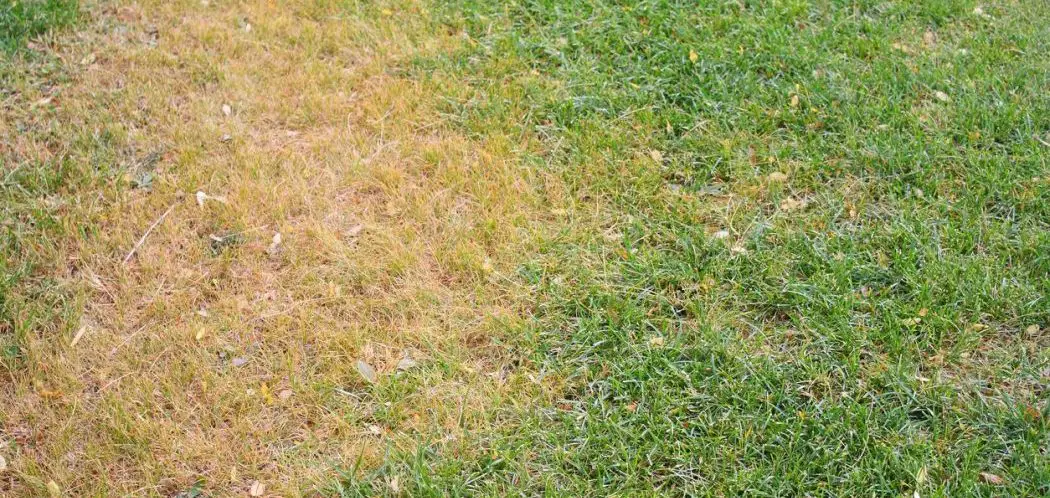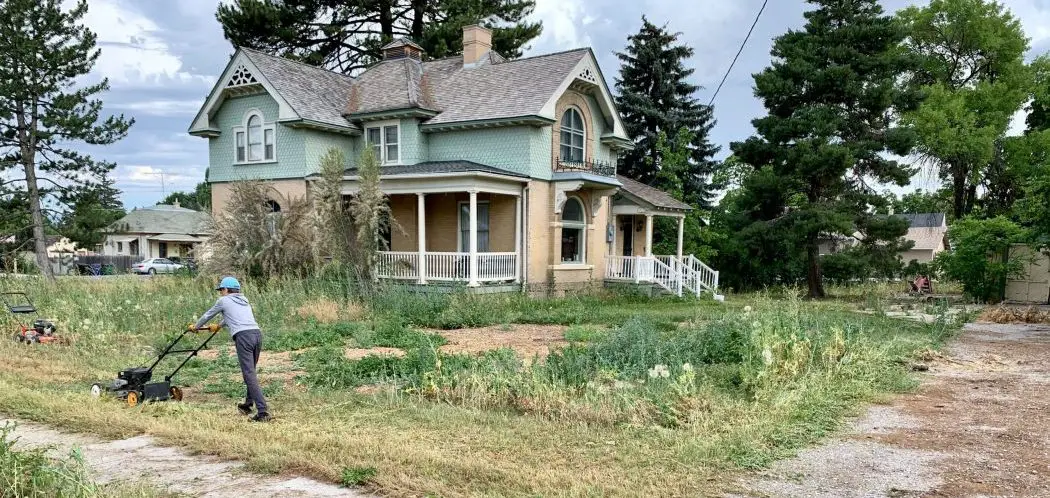After spending what seems like a lifetime trying to grow your lawn to perfection, there’s nothing worse than noticing it’s gotten uneven in some areas. Your first reaction may be to immediately start reseeding it, but before you do, there are other alternatives you should take into consideration.
For starters, it may not always be the appropriate season to reseed. In fact, the best seasons to do that would be spring or summer. So, what are you supposed to do the rest of the time?
Why Is it Important to Have an Even Lawn?
When someone discovers they have a bumpy lawn, they may not even want to bother trying to fix it. After all, it can be costly and time-consuming. But there are several reasons as to why you want to make sure your lawn is as smooth as possible.
Stable to walk on
For one, a smooth lawn will provide a stable lawn to walk on. If you have kids or elderly people living in your home, you don’t want to risk having them be injured on your uneven lawn. Not only that, but laying out on your lawn or doing any kind of activity will be pretty difficult when there are dozens of bumpy spots in your grass.
Easier to mow
When it comes to maintenance, mowing a bumpy lawn is not going to be a walk in the park. Your mower will likely be jumping around all over the place and you also risk completely scalping your lawn altogether.
Puddles
Holes in your lawn also means puddles of water after a heavy rainfall. When your lawn is uneven, it affects the drainage in your yard thus filling it up with tiny pools of water.
What Causes Uneven Lawns?
Before you start trying to fix your lawn, the best thing to do first is to try and figure out what is causing the problem.
There are a variety of reasons as to why your lawn could be uneven. It could be a result of uneven thawing in spring, depressions in the soil, settling, or even drainage issues.
New lawn
If the lawn is fairly new, settling may be the reason why it’s now uneven. This is normal and can easily be fixed using the topsoil mixture we discussed earlier. Keep in mind that if the spots are uneven by more than an inch, you may have to remove the sod that’s already there, fill the area with topsoil, and then replace the sod.
Thawing
An uneven lawn as a result of thawing after spring is typically seen with lawns that have clay soil in them. During the winter, the soil will freeze and cause bumps within your lawn. Then once it starts to thaw out, it will create these lumps.
A good way to deal with this issue and maybe even prevent it, is to aerate and redistribute the clay soil. This allows water and even oxygen to flow more evenly.
Children and pets
If you find yourself in a home with children and pets, they could also be to blame for the uneven spots in your lawn. Even wild animals can be known to dig into your yard at night while you’re fast asleep. Your lawn may be more susceptible to this when the grass is wet.
Mowing
Mowing your lawn in the same pattern may also be the cause of your lawn troubles. If this is the case, try and switch up the path you normally take to make your grass a little bit more even.
Thatch
Thatch could also be the culprit behind your uneven lawn. Thatch is the area above the soil and between the roots of your grass that is caused by not collecting your lawn clippings after mowing the lawn. Thatch dries out quickly and can leave a spot of bare soil in your lawn.
Pests
Bumpy areas may also be caused by something beneath your grass. For example, you may have moles or another type of burrowing creature in your lawn creating the problem. As a result, you will have to contact pest control to get them removed before trying to solve your lawn issue.

Chinch bugs
Chinch bugs may also be causing the issue, and in this case the best thing to do is use a pesticide to try and get rid of them.
Sprinkler system
If you have a sprinkler system installed, this could also be another reason for your bumpy lawn, particularly if the system is an old one. The water lines in the sprinkler system can be prone to damage and can cause leaks in your yard. That’s why it’s important to have your sprinklers checked on a regular basis.
When it comes to fixing your lawn, your best chance to do it is during the spring. This is because of the season’s warm days and cooler nights. However, before you step out into your lawn, give it a chance to dry from the night’s dewfall.
Other Alternatives to Leveling Your Yard
If you find that it isn’t the right season for seeding, you may have to turn to other alternatives. You may even ask yourself,
Should I use sand to level my yard?
You should not use sand to level your yard. This is primarily because of the fact that most lawns already have a lot of clay in the soil. Adding sand on top of it will only turn the soil into a cement-like substance that will make it incredibly difficult to drain.
To make matters worse, sand also tends to dry out during the hot summer months, making your grass more susceptible to drought.
If you have to use sand…
Use it in combination with topsoil to help with the drainage. Make sure you are filling at least half of the mixture with topsoil. You can then use this mix to level out low-lying areas on your lawn. If you don’t have soil, compost is also another great alternative.
One you are done filling in the spots, make sure to fertilize and water your lawn to help speed up the lawn growing process. Many people find that the spots they just filled still look low, but before you add more of the topsoil mixture to it, you want to give your grass a chance to grow.
Give the lawn at least a month to start to sprout before you repeat the process again.
Many people like to fix their uneven lawn issues by using a lawn roller. This can easily fix bumpy lawns caused by moles or other burrowing creatures. However, the downside to using a lawn roller is that you may be compacting the soil in your yard to the point where it will affect water drainage.
Using a lawn roller is also a temporary fix if you’re dealing with bumps created by animals. Unless you have trapped or gotten rid of the animals first, this is an issue that will keep coming back.
A lawn roller can also potentially destroy any new sod that has been recently planted.
How to Prevent Uneven Lawns
A good way to avoid having to deal with uneven lawns is to try and prevent them in the first place. You can do this by keeping your lawn as thick and as healthy as possible. You can do this by overseeding your grass.
Not to mention, you should also aerate your soil as often as possible and keep the lawn fertilized regularly.
Equipment for Leveling Your Yard
If you’ve decided to take on the task of leveling your yard yourself, rest assured there are several pieces of equipment that you’ll need. These include:
- hand rake
- landscape rake
- plastic leaf rake
- large push broom, shovel
- edge
- wheelbarrow
Once you have all this equipment handy, you are ready to go. If you don’t have them available, you can always rent or purchase them from your local hardware store.
In Conclusion
Although having a bumpy lawn isn’t the worst thing in the world, it can certainly be a pain to deal with. You are left not being able to enjoy it due to the bumps and holes, and your grass may start to suffer if the issue isn’t fixed.
Like we mentioned earlier, there are several ways to go about fixing this issue, all you have to do is figure out what is causing it in the first place. You can easily fix the problem yourself if you have the right tools, but other times you may have to rely on a professional to get the job done. This is especially true if you are dealing with rodents or insects that may be tearing up your yard.
Be sure to contact a specialist if you do decide to fix your lawn on your own but are a first timer. The last thing you want to do is make the problem worse.
It may sound like a lot of work, but a healthy lawn is worth all the trouble at the end of the day.






